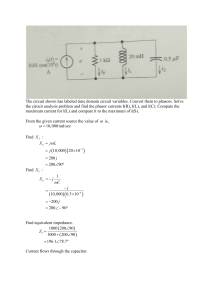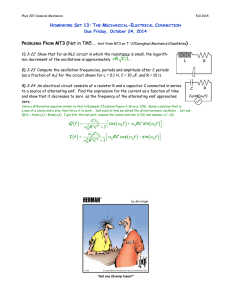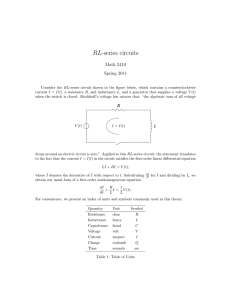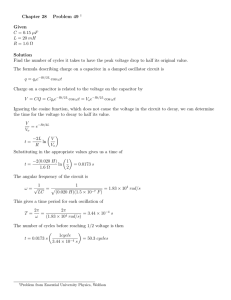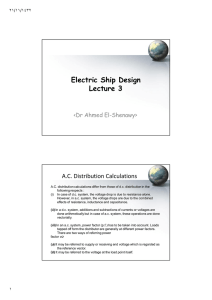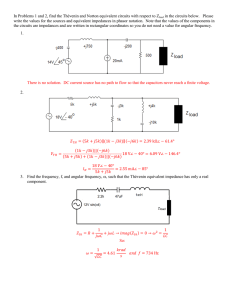I=VY V=IZ Circuit Element Admittance Y Impedance Z
advertisement
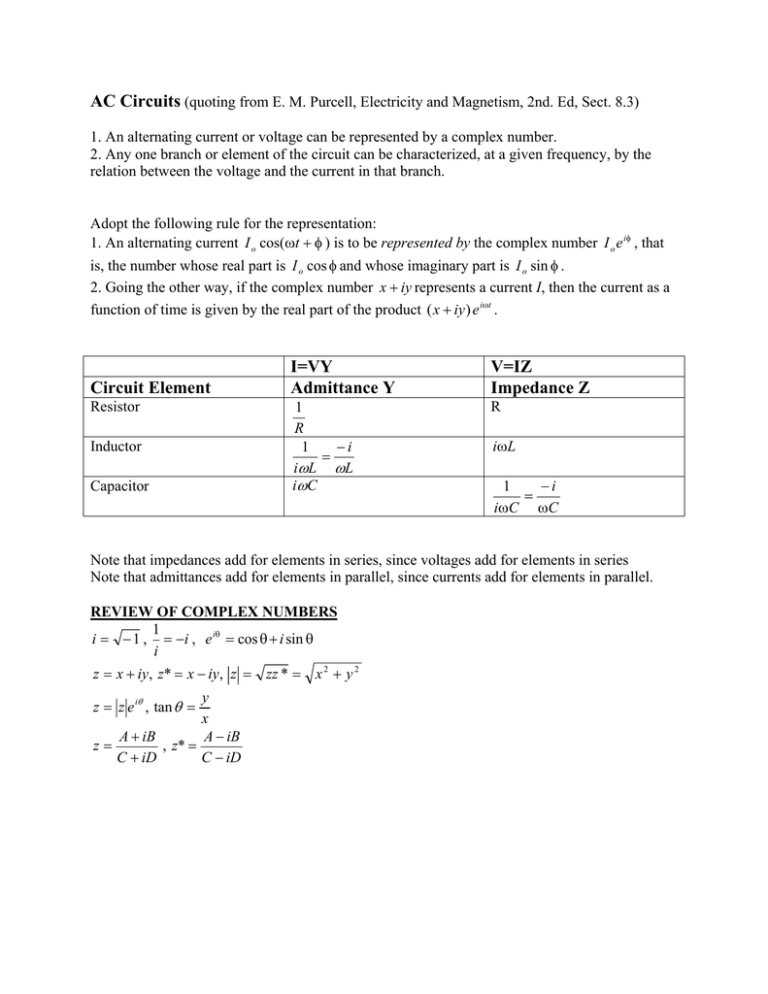
AC Circuits (quoting from E. M. Purcell, Electricity and Magnetism, 2nd. Ed, Sect. 8.3) 1. An alternating current or voltage can be represented by a complex number. 2. Any one branch or element of the circuit can be characterized, at a given frequency, by the relation between the voltage and the current in that branch. Adopt the following rule for the representation: 1. An alternating current I o cos(ωt + φ ) is to be represented by the complex number I o e iφ , that is, the number whose real part is I o cos φ and whose imaginary part is I o sin φ . 2. Going the other way, if the complex number x + iy represents a current I, then the current as a function of time is given by the real part of the product ( x + iy ) e iωt . Circuit Element Resistor Inductor Capacitor I=VY Admittance Y V=IZ Impedance Z 1 R 1 −i = iωL ωL iω C R iωL 1 −i = iωC ωC Note that impedances add for elements in series, since voltages add for elements in series Note that admittances add for elements in parallel, since currents add for elements in parallel. REVIEW OF COMPLEX NUMBERS 1 i = − 1 , = −i , e iθ = cos θ + i sin θ i z = x + iy, z* = x − iy, z = zz * = x 2 + y 2 y x A + iB A − iB z= , z* = C + iD C − iD z = z e iθ , tan θ =

